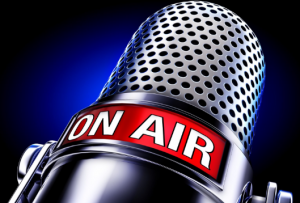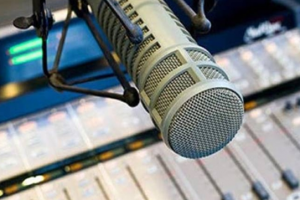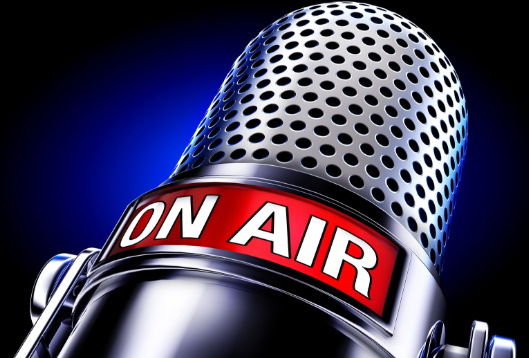When internet radio exploded onto the scene around 2005, it completely transformed radio from both a consumer and marketer perspective. Paired with the hundreds of new internet-enabled devices, radio has become on-demand consumer experience.
 With apps such as Pandora, Slacker, TuneIn, Spotify, Stitcher, and iHeartRadio available at your finger tips, internet radio has become a popular way to access audio stream. Through the eyes of the advertiser, this phenomenon provides the opportunity to get what they really want: active consumers willing to engage in their brand.
With apps such as Pandora, Slacker, TuneIn, Spotify, Stitcher, and iHeartRadio available at your finger tips, internet radio has become a popular way to access audio stream. Through the eyes of the advertiser, this phenomenon provides the opportunity to get what they really want: active consumers willing to engage in their brand.
Unlike traditional radio, many of these on-demand apps offer customized playlists, allowing the consumer to design the type of content they want. With registration data often including zip codes, this allows the advertiser to place relevant and compelling ads based on the consumers personalized music selection and their location. Internet radio can provide national reach or local market targeting and allows consumers to interact and engage with the advertisers website or Facebook page.
So what do these Internet stations offer and how do they differ in both a consumer and advertising perspective? Here is a brief summary of just a few of the popular stations being used today:
One of the main stations, and arguably the most well-known one is Pandora. According to a study released from Nielsen in June 2010, Pandora is one of the top three most downloaded apps from the Apple app store and consistently ranks in the top five most used apps in the BlackBerry and Android stores.
 Like Pandora, iHeartRadio allows users to listen to stations based on artist, song or album. The difference with iHeartRadio is its vast majority of song selections. iHeartRadio listeners can choose from a massive catalog of more than 11 million songs and 400,000 artists- more than 10 times the number of songs offered by Pandora.
Like Pandora, iHeartRadio allows users to listen to stations based on artist, song or album. The difference with iHeartRadio is its vast majority of song selections. iHeartRadio listeners can choose from a massive catalog of more than 11 million songs and 400,000 artists- more than 10 times the number of songs offered by Pandora.
Another popular consumer choice is Slacker Radio. What sets Slacker apart from its competitors is that it has professional DJ’s that customize the song selections and stations. This offers more personalized content than the other technology run sites.
Stitcher is the leader in internet radio for the “world beyond music.” This online site “stitches” together news, sports or talk shows from stations like Fox News, CNN and ABC.
TuneIn allows you to listen to live local and global radio from wherever you are. Whether you want to listen to sports, news, music or current events, TuneIn offers over 50,000 stations and 120,000 shows. It gives you the effect that you “right there with the people and places that are important to you.”
 Spotify allows branded apps and channels that allows an advertiser to provide an added value to their target audience. Louisiana Tourism recently used this to their advantage. When the campaign is no longer live…the channel lives on as a wonderful reminder. Spotify utilizes the king of social networks; Facebook. You can share your playlist with your friends. They have taken this one step further with the “life sound tracker.” Using the tracker, consumers can select friends on Facebook and Spotify will generate a playlist containing music from upcoming concerts in your area based on a mash-up of your friends’ music. Users can then have the option to generate a Facebook invite and send it to their friends.
Spotify allows branded apps and channels that allows an advertiser to provide an added value to their target audience. Louisiana Tourism recently used this to their advantage. When the campaign is no longer live…the channel lives on as a wonderful reminder. Spotify utilizes the king of social networks; Facebook. You can share your playlist with your friends. They have taken this one step further with the “life sound tracker.” Using the tracker, consumers can select friends on Facebook and Spotify will generate a playlist containing music from upcoming concerts in your area based on a mash-up of your friends’ music. Users can then have the option to generate a Facebook invite and send it to their friends.
Although Internet radio offers advertising opportunities across both online and mobile platforms, users can also pay a fee in order have an ad-free experience, which could be dismaying to a media partner.
But in an article written about Pandora, media and marketing specialist Kathryn Koegel, states:
“Typical radio stations play nine minutes of ads per hour according to a 2006 study and in a study of clutter on radio, it was reported to be as high as 20 minutes per hour on some stations*. A service like Pandora currently runs a maximum of three audio ads or less per hour and banner ads only appear on a device when a phone is not locked or dimmed thus only when the consumer is interacting with the device.”

The research shows that only 9% of Pandora subscribers pay to use the product. It is also shows extreme growth in the amount of users listening to Pandora on their mobile device versus the web. It allows optimization as we saw with a recent client. By paying attention to ongoing measurement, we saw that mobile’s click-thru rate was much higher than the web; therefore we switched impressions to only mobile.
As marketers, we can conclude that the majority of consumers do not mind advertising, especially if it is targeted to the listener. However, we must stay ahead of the curve in terms of unique and targeted advertising. With mobile technology rapidly advancing, the way consumers listen to radio will continue down this ever-changing path.

